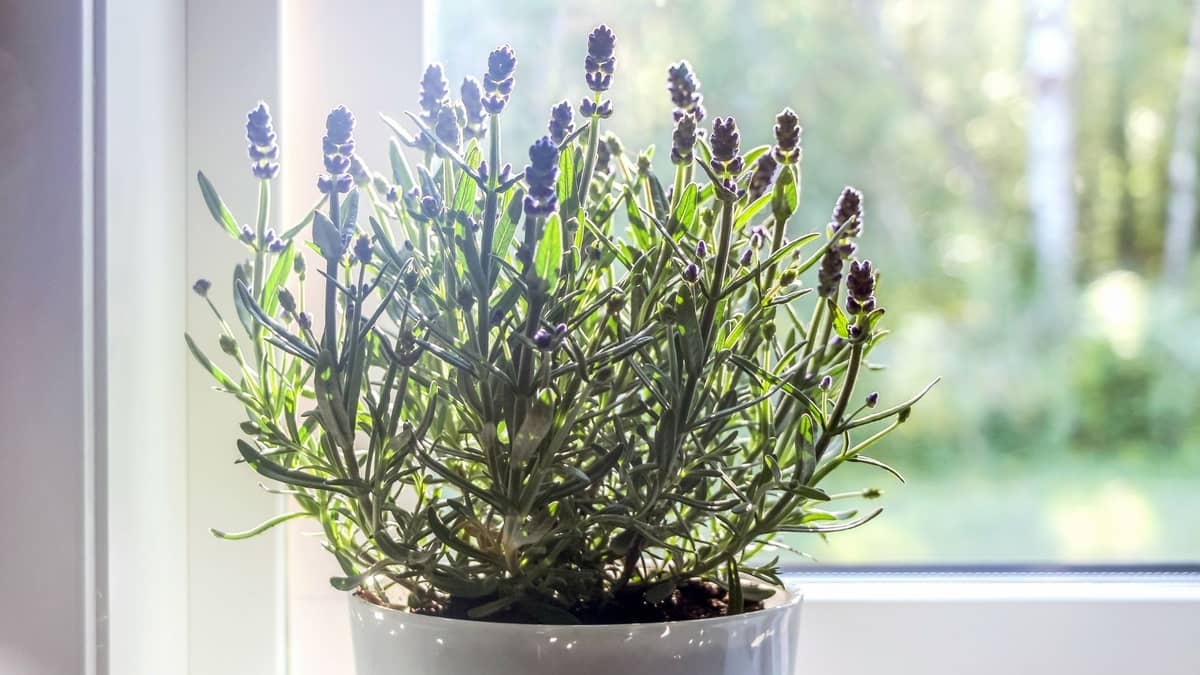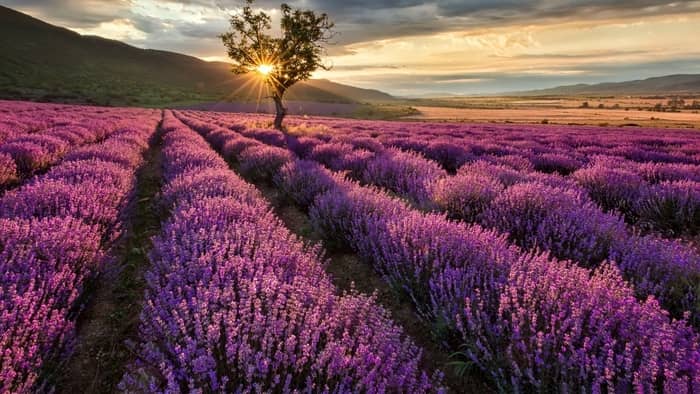Last Updated on April 11, 2022 by Marco C.
Lavender is incredibly popular because of its beautiful scent, and many people ask does lavender grow indoors. Nowadays, you can grow almost any plant indoors, and in today’s article, we’ll be learning whether it’s possible, and if so – how can you grow your own lavender indoors. Let’s get started.
Does Lavender Grow Indoors?
Yes, you can grow lavender indoors, but it’s much more difficult than growing it outdoors. If you ever traveled through Europe, you could have noticed massive lavender fields in France, Spain, and Italy. The reason they grow so well there is the weather.
Learn more about: Can You Grow Petunias Indoors?
These countries are very warm for the most part, and lavender needs plenty of sun exposure in order to grow well. This is going to be the first obstacle for you to overcome if you want to grow your own lavender indoors.
So, before taking a look at how to grow your lavender indoors, maybe you should look into growing it outdoors. If you live in a warm climate, it could actually be doable and it’s likely easier than growing it in your living room.
How To Grow Lavender Indoors
There are a few crucial conditions that you’ll have to ensure if you want your plants to grow well. As explained, lavender loves the sun, so you’re going to have to find your lavender a spot that gets six hours of sunlight at the bare minimum. It’d be better if it got ten.
If you live in a generally dark area and you can’t ensure that, then you’re going to have to buy LED lights – they’re usually very good at simulating sunlight, not to mention that they’re also going to keep the temperature up.
Additionally, we have to talk about temperature. Since lavender’s used in South European growing grounds, it’s going to need a high temperature to thrive – you should never let the temperature in your place drop below 50 degrees Fahrenheit.
These two requirements might be difficult to fulfill, but watering is easy, so at least you won’t have to worry about that.
When you’re starting your planting, don’t plant from seeds. Even though you could do that in theory, it’s going to be much more difficult than you think initially, so it’s best to plant established plants.
We’ve already discussed temperature and sunlight – when it comes to water, you should let the first layer of soil dry out. This is a bit odd as most plants want the soil to stay moist, but lavender doesn’t want you to water it frequently. You can water it once the first inch of soil is dry.
Lavender is susceptible to root rot, so you don’t want to overwater it. Lastly, when it comes to fertilization, you should fertilize your lavender every month and a half, using a formula that’s rich in nitrogen.
Everyday Use Of Lavender
Lavender is primarily useful because of its calming scent. If you haven’t ever smelled lavender – it has a distinctly strong, beautiful scent that has a calming effect on most people. This is why, when applied in great amounts, it can help with insomnia and general unrest.
However, lavender oil has reportedly helped with anxiety, with users reporting significant positive changes after using the oil. Similar positive effects have been recorded with patients suffering from depression, as well as migraines and constant headaches.
Its use transcends the psychological and has practical use in dermatology too, as it helps burn victims. Lavender has antimicrobial properties, so lavender oil can help prevent infections after a burn. It can also go above and beyond burns, helping people with chronic dermatitis, as well as eczema, psoriasis, and rashes.
All in all, lavender is a very powerful tool when it comes to battling unsettling mental conditions, like insomnia, depression, anxiety, and migraines because of the calming effects of its scent. Oils made from lavender are also particularly useful, especially when it comes to skin treatments.
About Lavender
Lavender originally comes from the Mediterranean, as well as the Middle East. It’s used to dry ground with few nutrients, which is why it shouldn’t be overwatered. It’s a very old species, dating at least 2000 years.
This plant was, despite being similar to a weed, historically worshipped and considered a holy plant because of its scent. It was also used as a go-to medicine, but the effects of that sort of medicine are questionable and incomparable to modern medicine.
Today, lavender is one of the most popular scents, used regularly with soaps, shampoos, scented candles, etc.
Read more about 10 Dazzling & Easiest Flowers To Grow Indoors From Seed
FAQ
How do you keep lavender alive indoors?
The three most important things to keep in mind are lighting, temperature and watering. Lavender needs at least 6, but preferably more, hours of sunlight a day. The temperature can't ever drop below 50 (F) and you can't overwater it as it's used to a dry climate.
Why type of lavender is best for indoors?
There are probably millions of varieties of lavender from suppliers all around the world, and some of them are specifically bred to be grown inside. You can usually choose this when you're buying your plant. When buying, buy an established plant, not seeds.
Does lavender do well in pots?
Yes, lavender can do very well in pots as it doesn't need much space. The only important things are lighting, temperature and watering.
How long does it take to grow lavender indoors?
It usually takes about 2 months for your lavender to grow to a mature size, but that doesn't mean that it will flower immediately. It will take longer if you grow it from seeds.
To Sum Up
You can definitely grow your own lavender indoors, but you’re going to have to regulate the lighting, temperature, and watering constantly. If you live in a hot climate, growing it outdoors could be easier than indoor growing.
Luckily, lavender isn’t hard to grow considering all things, and if you can buy LED lights and keep the temperature above 50 degrees, you should be able to grow lavender just fine.


